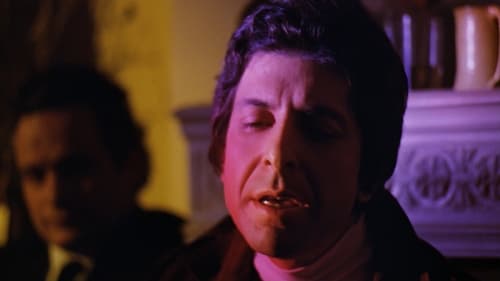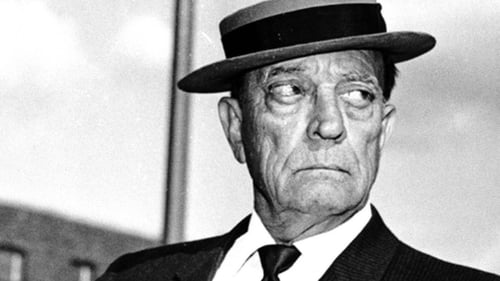
Sound Editor
In 1977, Prince Charles was inducted as honorary chief of the Blood Indians on their reserve in southwestern Alberta. The ceremony, conducted in the great Circle of the Sun Dance, commemorated the centennial anniversary of the original signing of Treaty 7 by Queen Victoria.

Editor
This is a short film about the Alberta All Girls Band Spectacular. The Edmonton-based band was invited to open the 1974 World Cup Soccer Championship at the Munich Olympic Stadium. They performed before a combined live and television audience of over half a billion people. The precise marching formations and fine musicianship are impressive.

Director
This is a short film about the Alberta All Girls Band Spectacular. The Edmonton-based band was invited to open the 1974 World Cup Soccer Championship at the Munich Olympic Stadium. They performed before a combined live and television audience of over half a billion people. The precise marching formations and fine musicianship are impressive.

Editor
Two charming seniors consider the pros and cons of entering a "home". Do old-age institutions fit the needs of those they are designed to help?

Editor
Toronto-born Norman Jewison first gained prominence producing for Canadian television, then went on to greater success making Hollywood theatrical features. In this film he is seen directing a large international cast and crew in the film version of the musical hit 'Fiddler on the Roof'. Between scenes, Jewison talks freely about many aspects of the film industry and some of his experiences in it. A candid study of a director in action.

Sound Editor
"Fogo is a windswept island off the coast of Newfoundland where the inhabitants for generations have lived by, on and from the sea. In this film William Wells, fisherman, and his two sons take a day off from the nets for a journey to the gannet colony on the Funk Islands, fifty miles farther out to sea. There are exceptional close-up views of enormous flocks of seabirds swarming on the cliffs and in the sky."

Music Editor
This fictional feature follows a twenty-something man who is struggling to define his position in the world in early adulthood. He has left their parents' home but still has not made an home of his own. Our protagonist’s alienation is palpable; for him life is a game, not because he chooses to make it so, but because he is unable to make anything more of it. But for those who befriend him and eventually turn him loose again, his game is not enough.

Sound Editor
More signs of winter's end as more wildlife returns. The family makes an excursion for fresh fish from a lake. They build a karmak and move in the furs, cooking troughs, etc. The woman sets up her lamp, spreads the furs and attends to the children. There are signs of returning wildlife. The man moves out on the lake ice and chips a hole for fishing. He baits his hook and lowers it jigging the line to attract the fish. Crouched by the hole, he persists with his purpose and takes some fish, as does his wife who has joined him. Both remain at the hole through a severe blizzard.

Sound
Two Eskimo families travel across the wide sea ice. Before night falls they build small igloos and we see the construction in detail. The next day a polar bear is seen basking in the warming sun. A woman lights her seal oil lamp, carefully forming the wick from moss. The man repairs his snow goggles. Another man arrives dragging a polar bear skin. The boy has made a bear-shaped figure from snow and practices throwing his spear. Then he tries his bow. Now, with her teeth, the woman crimps the sole of a sealskin boot she is making. The men are hunting seal through the sea-ice in the bleak windy weather. The wind disturbs the "tell-tales," made of eider down or a hair loop on a bone, that signal when a seal rises to breathe. A hunter strikes, kills and drags his catch up and away. At the igloo the woman scrapes at a polar bear skin and a man repairs a sled. In the warming weather the igloo is topped with furs and a snow shelter is built to hide the sled from the sun.

Sound
The time is early autumn. The woman wakes and dresses the boy. He practices with his sling while she spreads a caribou skin to dry. The boy picks berries and then the men come in their kayak with another caribou. This is skinned, and soon night falls. In the morning, one man leaves with his bow while the other makes a fishing mannick, a bait of caribou meat. The woman works at the skins, this time cleaning sinews and hanging them to dry. The man repairs his arrows and then sets a snare for a gull. The child stones the snared gull and then plays hunter, using some antlers for a target. His father makes him a spinning top. Two men arrive at the camp and the four build from stones a long row of manlike figures, inukshult, down toward the water. They wait for caribou and then chase them toward the stone figures and so into the water where other men in kayaks spear them. The dead animals are floated ashore and skinned.

Sound
It is late autumn and the Eskimos travel through soft snow and build karmaks, shelters with snow walls and a roof of skins, in the river valley. The geese are gone but some musk-ox are seen. The man makes a toy sleigh from the jawbones of a caribou and hitches it to a puppy. Next day the women gather stocks of moss for the lamp and the fire. The men fish through the ice with spears. The woman cooks fish while the men cache the surplus. Then the family eats in the karmak. The men build an igloo and the household goods are moved in. They begin the complicated task of making a sleigh, using the skins from the tent, frozen fish, caribou antlers and sealskin thong. The woman works at a parka, using more caribou skin, and the children play. Now the sled is ready to load and soon the family is heading downriver to the coast.

Music Editor
The story of two young women who go to the city to work in a dress factory, and who share a room to ease their expenses and their loneliness. The film shows the currents that brought them together and the facets of their natures that first made them seem compatible but eventually drove them apart. Their story reflects, to a degree, the situation of anyone who has ever shared the life of another.

Music
In the fall of 1964, just over a year before his death, Buster Keaton traveled to Canada to make The Railrodder, a short subject that now enjoys a small cult following. Documenting this mobile production in fascinating and unexpected detail, Buster Keaton Rides Again offers a rare glimpse of the comedy legend’s temperament, philosophies, hobbies, marriage (his third), and the occasionally combative creative process behind the scenes. An intimate look at one of cinema’s most enduring legends.

Director
With no commentary other than the music and words of the performers themselves, this fast-moving film presents the grandest Canadian concert of them all. Here, the performers include both the great and the unknown from across the country, the musical styles span the centuries, and the artists are involved in all stages of musicianship: learning, teaching, conducting, recording, performing. Among the film's many stars are Edith Butler, Beau Dommage, Maureen Forrester, Glenn Gould, Paul Horn, the Huggett Family, and Gilles Vigneault.













